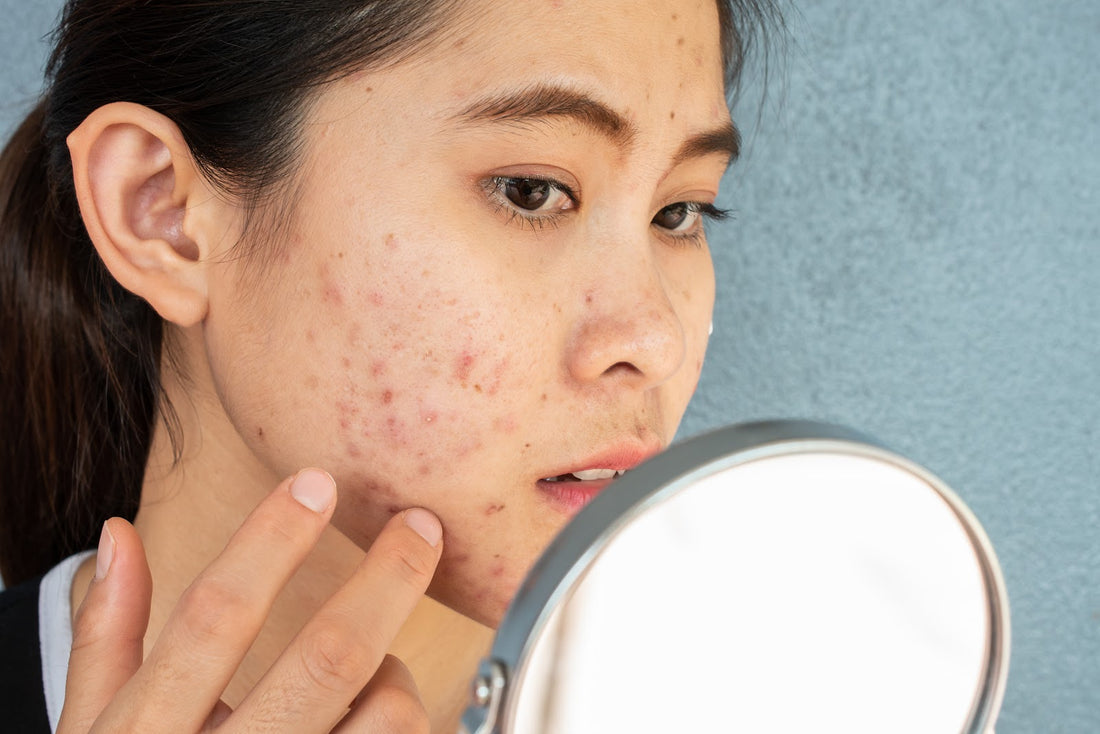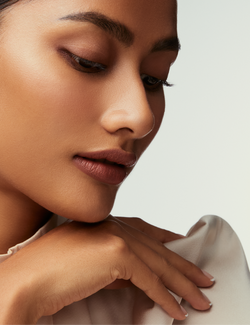When it comes to the topic of skincare, acne scars are a common concern with individuals ranging from teenagers to adults seeking ways on how to get rid of them. These lingering marks are more than just skin deep, they can often impact not only our skin but also our self-esteem. Nonetheless, not all hope is lost — even if you may not be able to fully remove your acne scars immediately, it is possible given time and the right acne scar treatment. If you've been wondering about how to remove your acne scars or even what kind of skincare routines you should adopt for different scar types, it's important to first recognise what kind of acne scarring you're dealing with before figuring out your treatment options. In this guide, we'll delve into the world of acne scars, exploring the causes, types and how to deal with them, whether it be with treatments or skincare tips to help prevent further scarring.
What is Acne?
Acne occurs when hair follicles clog with oil and dead skin cells, fostering bacterial growth and inflammation. This leads to the formation of pimples, blackheads, and whiteheads. While often linked to hormonal shifts, genetics and medications can also play a role. Although common among teenagers, acne is a condition that can affect people of all ages.
While acne and pimples are often used interchangeably, pimples are actually a symptom of the condition, while acne is the condition itself. Hence, an individual with acne-prone skin will typically experience pimples as part of their condition, but not everyone who has pimples have acne-prone skin — sometimes it could simply be due to stress or a lapse in your skincare routine!
What Types of Acne Scars Are There?
Understanding the type of acne that causes the scar will help you figure out a more tailored and effective approach when undergoing treatment for your acne scars. Below is a list of common acne scar types:
-
Atrophic Scars:
- Ice Pick Scars: Narrow, deep holes resembling small puncture marks.
- Boxcar Scars: Wider dents with well-defined edges, resembling chickenpox scars.
- Rolling Scars: Broad, shallow indentations that give the skin a wave-like appearance.
-
Hypertrophic Scars (Keloid Scars):
- Raised, thickened scars that extend beyond the original acne site.
-
Post-inflammatory Hyperpigmentation:
- Darkened spots on the skin after acne has healed.
What Treatment Options Are There for Acne Scars?
The appearance of acne scars can typically be reduced given time and the right treatments. Of course, these acne scar treatments should only be performed by licensed dermatologist and skincare professionals to ensure your skin gets the care it deserves. Below are some of the typical treatment options currently available for acne scars:
-
How To Treat Atrophic Scars:
There are several treatment options to remove atrophic scars depending on their severity, namely dermabrasion which involves removing the top layer of skin to reduce the appearance of scars, and laser therapy which stimulates collagen production for a smoother skin texture. Dermal fillers can also sometimes be suggested to plump up depressed scars and create a more even skin surface. -
How To Treat Hypertrophic and Keloid Scars:
Hypertrophic and keloid scars have options that range from gels or creams that can be used to soften and flatten raised scars, to more invasive procedures. Some treatment options include steroid injections that reduce the excess collagen production in order to help flatten the scars. However, in severe cases, surgical removal may be considered. I's recommended that you seek professional guidance from a dermatology specialist before proceeding with any of these treatments. -
How To Treat Post-inflammatory Hyperpigmentation:
Dark spots left by post-inflammatory hyperpigmentation can be addressed through topical treatments such as professionally formulated skincare products with ingredients like retinoids, vitamin C, and alpha hydroxy acids can help fade hyperpigmentation over time. Alternatively, you can also opt for facials that target these concerns such as chemical peels, laser therapy and intense pulsed light (IPL) treatments.
If you've been trying out over-the-counter treatments with little to no success at getting rid of those stubborn acne scars, perhaps it's time to turn to the professionals for help — especially if those scars are making you feel self-conscious. With the help of professional skincare experts, you'll be able to pinpoint your specific scar types and get the right treatment that your skin needs.
Lifestyle and Skincare Habits to Address Acne Scars
Nurturing the healing process for both pimples and acne scars involves adopting both a healthy lifestyle and solid skincare habits. Ensure that you eat a balanced diet that's rich in vitamins and antioxidants to support skin regeneration, and stay hydrated to promote overall skin health. Don't forget to make sure you get your beauty sleep to facilitate optimal skin recovery too.
As for your skincare routine, adopt gentle cleansing and moisturising routines to improve your skin's elasticity and consistently use sunscreen to shield scars from sun damage. By seamlessly intertwining these lifestyle and skincare practices, you actively contribute to the gradual fading of acne scars, revealing a clearer, more vibrant complexion.
By understanding the types, causes, and prevention of acne scars, as well as the plethora of treatment options available here at Beauté Library, you can regain your confidence and enjoy a flawless appearance once again. Don't let acne scars hold you back from feeling your best; take action and embrace the beauty of clear, scar-free skin.


